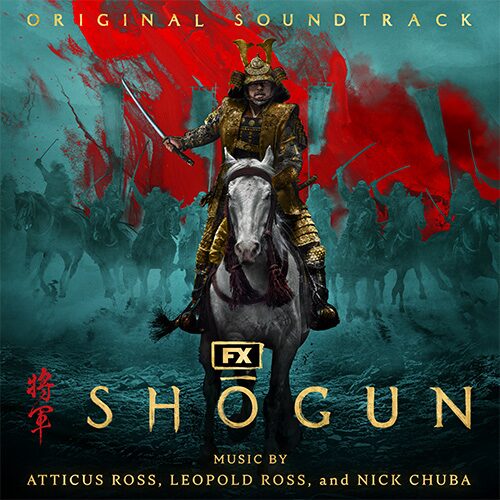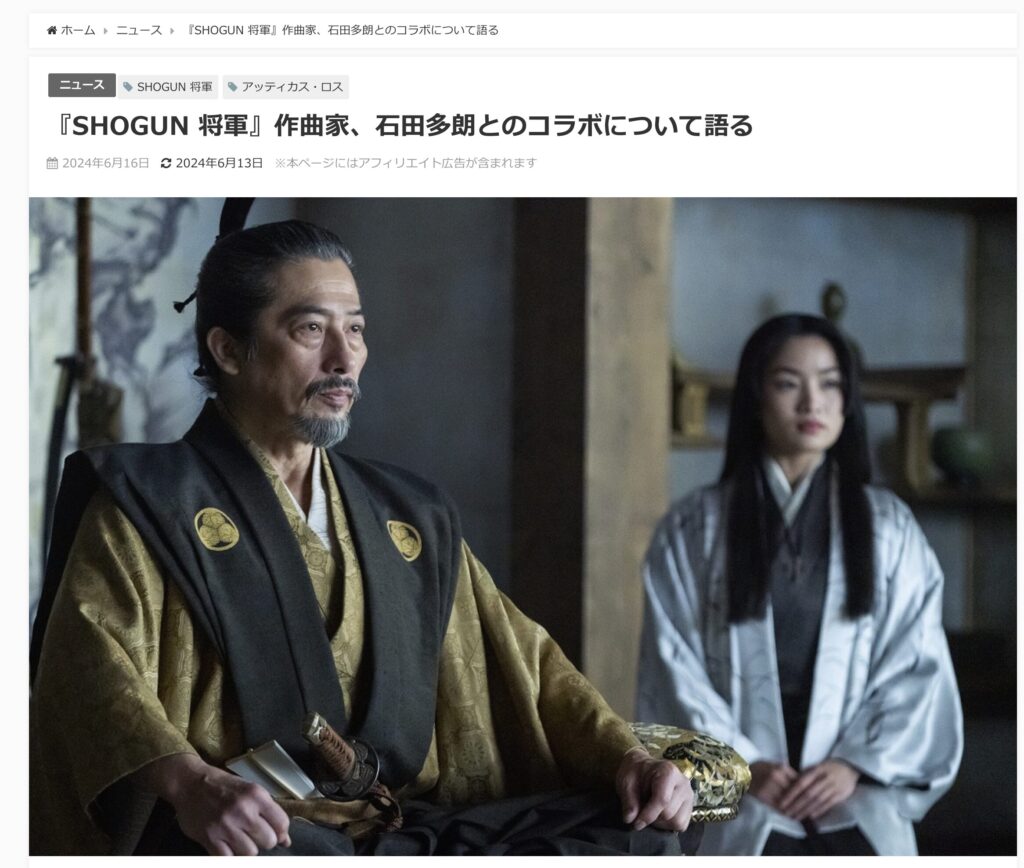
The epic drama series “SHOGUN,” produced by FX (a premium television channel owned by Walt Disney Company’s FX Networks) and featuring Taro as a soundtrack arranger, broke records with the highest number of initial views in the network's history. The series achieved a historic feat at the 2024 Emmy Awards with a record number of entries and wins in an unprecedented 18 categories. Originally intended as a limited series, the show’s tremendous success has led to the decision to produce a sequel.
The official site describes the series as follows: "Executive produced by the creator of 'Top Gun: Maverick' and starring Hiroyuki Sanada. Inspired by historical figures such as Tokugawa Ieyasu, it portrays the intrigue and high-stakes drama leading up to the Battle of Sekigahara. The story centers on the brilliant warlord Toranaga who finds himself cornered on the eve of battle, his English retainer Anjin, and the enigmatic Christian Mariko, who holds the key to their intertwined destinies. Against a backdrop of political machinations and betrayal, this spectacular drama series captures the ruthless struggle for the title of Shogun."
The show is set in the late Sengoku period, at the end of an era marked by Oda Nobunaga’s reign. It depicts a world shrouded in darkness and tension, as if the air is heavy with an ominous stillness before dawn. It’s a time when the lines between good and evil, friend and foe are blurred, and alliances are uncertain. Samurai, wives of warlords, foreigners, missionaries, and Christians all weave their complex emotions and motives into the fabric of the story. The sense of immersion is so strong that one may wonder if everyone is the protagonist.

Creating this visually and historically accurate depiction of Japan’s feudal past required meticulous research and attention to detail. From costumes and props to gestures and rituals, every aspect of the production was crafted with precision.
Atticus Ross, an Academy Award-winning composer, along with Leopold Ross and Nick Chuba, noted that their approach to music evolved as the production progressed. Initially, they planned to blend epic and orchestral elements but shifted to a more purely epic sound, incorporating traditional Japanese instruments and Gagaku music.
During their exploration of Japanese music, they connected with Taro, whose expertise became central to achieving the desired sound. Their goal was to create music that perfectly matched the script and the unique tone of this "SHOGUN," not something generic for any historical spectacle.
Responding to Atticus’s requests, Taro introduced traditional Japanese instruments such as the sho, hichiriki, and biwa, as well as the shamisen and shakuhachi. He then selected the appropriate instruments for each draft of the compositions, transcribed the music, and worked with some of Japan's finest musicians, sometimes improvising on the spot. This back-and-forth process with Atticus, all conducted remotely, was repeated over several months. Atticus described this iterative process as being in a "feedback loop" where they were "listening to their own sounds while transforming them into the atmosphere and landscapes of the story."
Taro sensed that the music they sought conveyed themes of mystery, uncertainty, and ambiguity. They did not ask for rhythmic clarity, such as that provided by drums, but rather for sounds that conveyed a sense of indefinable boundaries—quite the opposite of today's trend toward clear, structured narratives, like those created by AI.
The layered, mysterious qualities of Gagaku—a music that transcends conventional genres—seemed to resonate with their vision. By blending these ancient sounds with modern expression, a rich new soundscape emerged.

For example, the main title track features all the traditional Japanese instruments and artists, enveloping the viewer in a solemn atmosphere that evokes both unease and reverence for the unknown.
In the opening scene of the first episode, as the ship Erasmus drifts with the English navigator Anjin aboard, the music captures the anxiety of the characters facing an uncertain fate. The sound of the hichiriki was rendered on a keyboard to create a science-fiction-like quality.
Personally, the most memorable moment for me was in Episode 3, when, just after Anjin and others resolve to persevere in their desperate situation, the sun rises and light floods in. The sound of Gagaku intertwines with the light, creating an almost mystical sensation, as if the music itself is illuminating the scene. The visuals, music, and emotions of the characters were seamlessly integrated.
In an interview, Nick mentioned that “the music was crafted to accompany the lives of each character, including Anjin.”
This closely aligns with the contrapuntal approach to sound and image that Taro studied in graduate school under the influence of the composer Toru Takemitsu. The significant role that Gagaku and traditional Japanese instruments play in this project is deeply meaningful.
In the next installment, we’ll delve deeper into the unique power of Gagaku and its allure as perceived from an international perspective.
This exploration might just uncover the hidden potential of this ancient art form.
Written by Atsuko Aoyagi / ao.Inc.
#DailyThoughts #JapaneseTraditionalMusic #Composition
#Gagaku #ComposingGagaku #NonMusic #GagakuPerformance
#FilmMusic #CinematicMusic #SpatialMusic #GagakuStories
#WhyIs #Gagaku #Layer #AndMysterious
#soundtrack #movie sound #effect #effects that gagaku brings to movie
#fourth movie sound #toru takemitsu #immersive